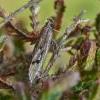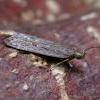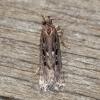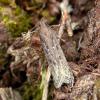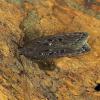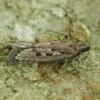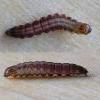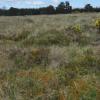35.017 Neofaculta ericetella (Geyer, 1832)
Status and Distribution
Common, sometimes locally abundant, throughout most of the British Isles, usually wherever heather occurs. Occasionally found in gardens where heather has been planted.
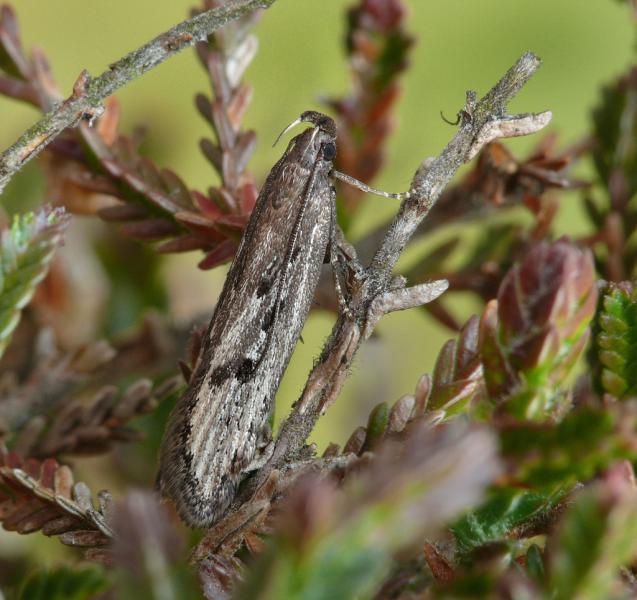
Provisional map
Habitat
Finding the Moth
Larva: found late August to February in spun grasses such as Molinia coerulea (purple moor-grass) emerging to feed on the leaves or within the flowers, of heather. Based on captive bred observations, it is suggested that the larva may only leave these spinnings in the grass at night-time. Pupa at ground level or sometimes within the larval spinning, from March to April or occasionally May.
Adult: easily disturbed amongst the heather during the day and comes to light. Observed once to apparently nectar on Antennaria dioica (mountain everlasting).
Similar Species
Similar sized species that could be found in heathery locations during parts of the flight period of N. ericetella's are Xenolechia aethiops, Prolita sexpunctella and Teleiopsis diffinis.
X. aethiops is much blacker and his narrow pointed wings, flying slightly earlier in the year.
P. sexpunctella has a distinct pinkish hue to the forewing when fresh and usually flies lower down in the damper portions of heaths, moors and mosses.
The darker forms of T. diffinis have an oblique line of black raised scales near the base of the forewing and lack the streaked black lines of N. ericetella in the outer third of the forewing.
A stripey specimen of this species has been confused with Aroga velocella.
Single brooded in an extended flight period from the end of April to the end of July. Occasionally in mid-April and August, rarely in March, September and October.
Earliest: 16th March 2003 VC49
Latest: 10th October 2009 VC59

